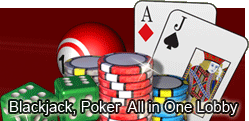
Backgammon Game History
History shows that there are many types of games that were played throughout the world that are very similar to the backgammon game as we know it today. It is interesting to know a little about these games, to see how our beloved modern backgammon actually came about.
A varied version of a backgammon game was played in China in as early as 700AD. It was otherwise known as “nard”, although the local name was Shan-liu which translates into English as “Double Six”. Nard was very similar to the backgammon game that we know today in the sense that it involved a backgammon board with thirty checkers that were only able to move due to the correlating results of two rolled dice.
There are many other types of games throughout the world and ages that are similar to modern backgammon. Just a few examples are: Hypergammon, tapa, portes, plakoto, fevga, acey-deucey and jacquet. These games have their own set of rules and therefore result in the games being played with very different approaches.
Generally speaking, the modern version of the backgammon game as we know it today involves two dice, thirty checkers and twenty four stem points. This standard system that is known worldwide, seems to most closely resemble the Middle Eastern board games. The game in this format seems to have appeared in Persia in the 700s and extended both east and west, with the spreading out of the Moslems.
The Romans had a similar game called “Tabula” which was played throughout their empire. The game is known to be an ancestor of the modern backgammon game of today. A reason why is because the set-up strategies are very similar. It was originally known as a gambling game and apparently the Emperor Claudius enjoyed playing it so much that he had a built in board in his personal carriage!
|
|

